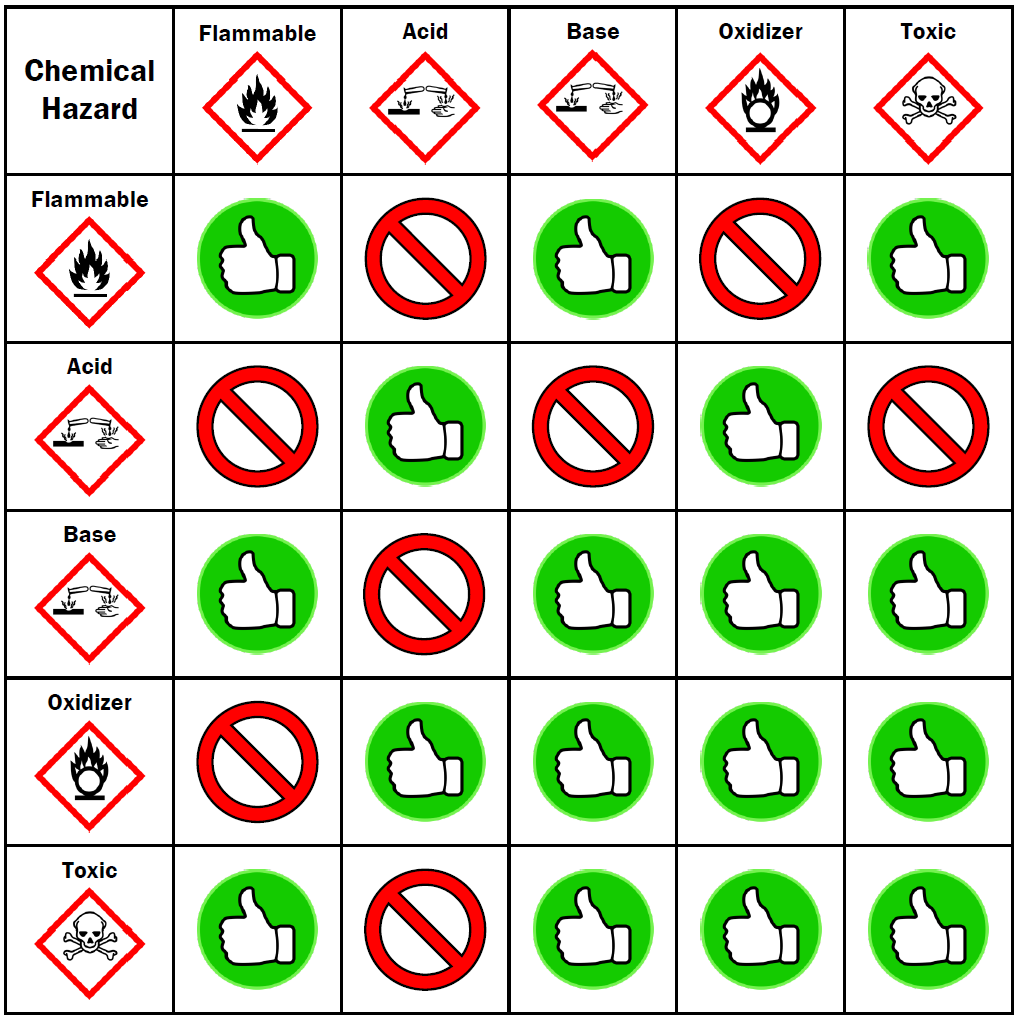Safe chemical storage practices can reduce the risk of injury or exposure, and damage to property. Fire codes, along with best practice, drive the requirements and recommendations for storing hazardous chemicals at the University of Virginia (UVA).
The nature of facilities at UVA makes chemical storage a challenge. Complicating the issue is the nature of the chemicals themselves and the diversity of research. These guidelines are to be used as general rules. The only way to truly store items by compatibility is to check the Safety Data Sheet (SDS).
Below you will see tables and download links for chemical storage guidelines and a "quick guide" for chemical storage by compatibility.
Acids and bases use the same symbols as shown in the tables on this page. To tell if a chemical is an acid or a base, there are two things you can do before checking sources like an SDS directly. The first is to reference the name of the chemical. Typically, acids have the word "acid" directly in the name. Bases are more varied. For example, chemicals that end in "hydroxide" or "-amine" are almost always bases. The second is to search the chemical's name online, followed by "pH" (e.g. "methylamine pH"). If the pH is below 7.0, the chemical is an acid. If it is above 7.0, it is a base. Chemicals close to 7.0 are neutral but may exhibit other characteristics requiring special storage considerations. As always, you can also contact EHS with any questions about identifying a chemical's storage group.
If you have a question about chemical storage, or to request large prints of the tables displayed below, contact EHS’s Chemical Safety Group at 434.982.4911 or email Clarissa Lynch at cl9ev@virginia.edu, Jim Reese at jgr2y@virginia.edu, or Evan Hall at eh5qp@virginia.edu, 434-243-1727.

